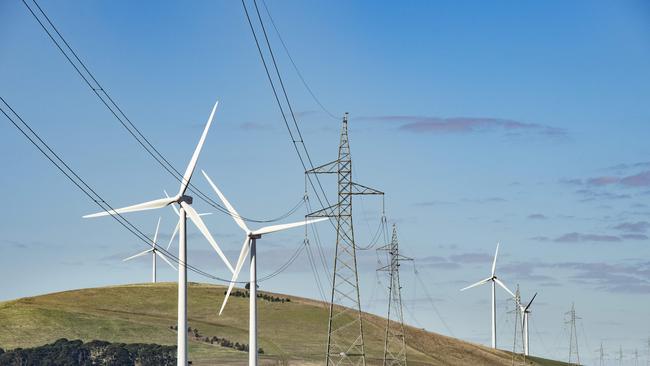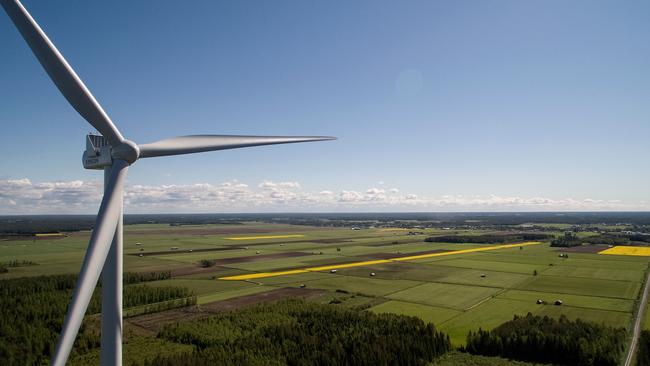Farmers sidelined, as wind and solar farms earn $1.6 billion in subsidies
About 100 times less is being spent on agricultural emissions reduction schemes and research, compared to the current spending on reducing fossil fuel emissions.

Foreign-owned wind and solar farm developers are effectively receiving up to $1.6 billion a year in subsidies from Australian businesses and households, while agriculture struggles to fund its emissions reduction efforts, say industry analysts.
About 10 per cent of every Australian’s electricity bill covers the cost of Australia’s Large-scale Renewable Energy Target, Small-scale Renewable Energy Scheme and state-based schemes such as the Victorian Energy Upgrades Program.
Under the LRET, electricity retailers must this year alone buy 33.2 million megawatts of Large-Scale Generation certificates – a type of emissions trading scheme that can reduce the cost of renewable energy developments – mainly from wind and solar farm operators, at a cost of about $1.6 billion, which they add to consumers’ bills.
It means a 6MW turbine, operating at a capacity factor of a third over 24hrs for 365 days, will generate 17,520 LGCs worth about $50 each – equal to a $876,000 subsidy, plus $1.2m to $1.7m from the sale of the electricity it generates.
Meanwhile agriculture, which produces 17.5 per cent of Australia’s greenhouse gas emissions, is left to share in a fraction of about $130 million allocated each year under the federal Emissions Reduction Fund auction scheme.

University of Melbourne sustainable agriculture Professor Richard Eckard said up to 100 times less was being spent on agricultural emissions reduction schemes and research, compared to that being spent on curbing fossil fuel emissions.
“It’s time we started investing more intensively in livestock (emissions),” Prof Eckard said – but farmers could not and would not do it alone.
Electricity consumers are also subsidising the cost of upgrading massive 550kV transmission lines that are needed to feed solar and wind-generated electricity from regional Australia into Brisbane, Sydney and Melbourne.
Victoria Energy Policy Centre director Bruce Mountain and University of Queensland Professor Simon Bartlett estimated construction of the controversial extended Victoria-NSW Interconnector West project alone would add $940m to annual electricity bills by 2036.
In their recent Plan B report, the analysts stated “to put this into context that is about 170 per cent the level of transmission charges in Victoria this year”.
The Clean Energy Council, which represents wind and solar farm developers, said “energy from wind or solar is the lowest cost form of new generation, and these costs continue to decrease year-on-year”.
“Large-Scale Generation Certificates ensure the benefits of cheaper renewable energy are available to consumers.”
Other industries are left to share in the $130 million Emissions Reduction Fund, however Professor Eckard said most contracts in the Emissions Reduction Fund went to forestry and town councils to curb landfill emissions, with agriculture’s share being “pretty minimal”.
Prof Eckard said the average dairy farmer, with a turnover of $2m, would only gain $2000 from curbing their methane emissions, but at a substantial cost.
The same applied to grain growers, who he said faced paying a premium of 14 per cent to buy specially coated urea and DAP fertiliser to reduce their nitrous oxide emissions by a mere 200 grams per hectare.

It means an average grain grower spending $300 a hectare on nitrogen fertiliser, would pay an extra $42/ha to reduce their nitrous oxide emissions by 200 grams/ha, which equated to 50kg of carbon dioxide equivalents worth $1.55 in Australian Carbon Credit Units.
Prof Eckard has put together a proposal in partnership with Fertiliser Australia, which they lodged with federal Agriculture Minister Murray Watt and Minister for Climate Change Minister Chris Bowen last month, showing a national approach to the problem could cut nitrous oxide emissions by 1.71 million CO2 equivalent tonnes, worth $51 million in ACCUs.
He and Fertiliser Australia estimated they could cut the cost premium of coating nitrogen fertilisers from 14 per cent to just 4 per cent, with government funding – but ironically, Prof Eckard said feedback so far from the government’s bureaucrats was “there’s the objection that it’s a subsidy?”.
A spokesman for Minister Bowen said: “Nitrous oxide emissions, and other greenhouse gas emissions, will be considered as part of the consultation and development process of the Agriculture and Land Sector Plan.
“Domestic manufacturing of low emissions technologies, including coated urea fertilisers, will be considered as part of the consultation and development process of the Industry Sector Plan.”
Agriculture has also gained little carbon abatement support through the $30.5 billion Clean Energy Finance Corporation.
Since it was formed in 2012, the CEFC had spent just $335m on 25 agriculture-related transactions, with a spokeswoman stating that included “more than 1500 smaller-scale asset finance investments by individual farms – e.g. on-farm equipment, irrigation updates”.
The CEFC’s annual reports show most of its investments in agriculture have gone to large corporate players, such as a $75m equity commitment to an agricultural fund managed by Macquarie Asset Management, to support efforts by Paraway Pastoral Company to reduce on-farm methane intensity.




